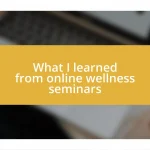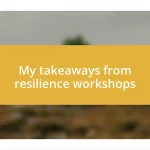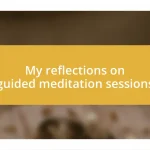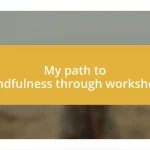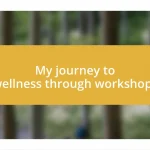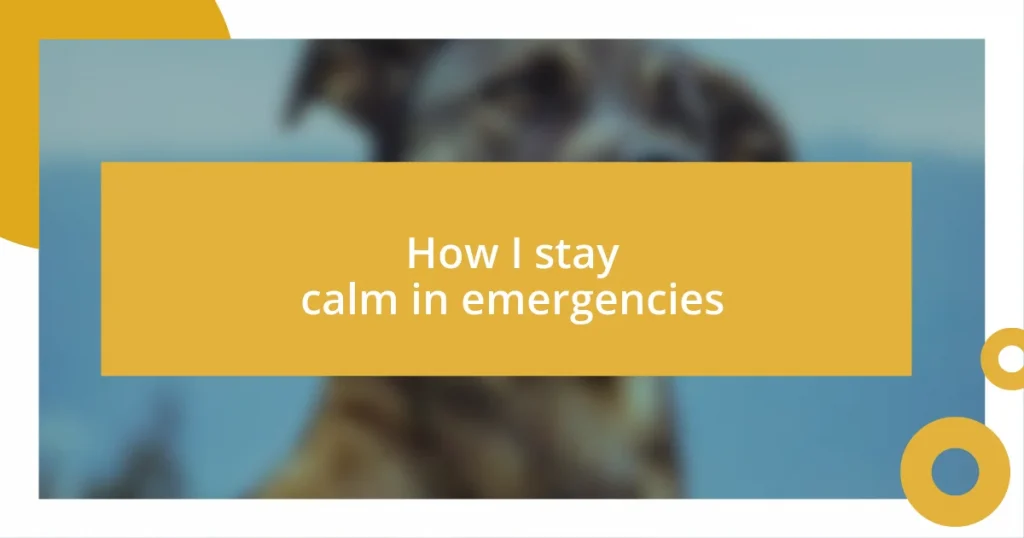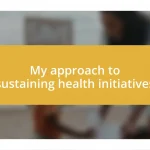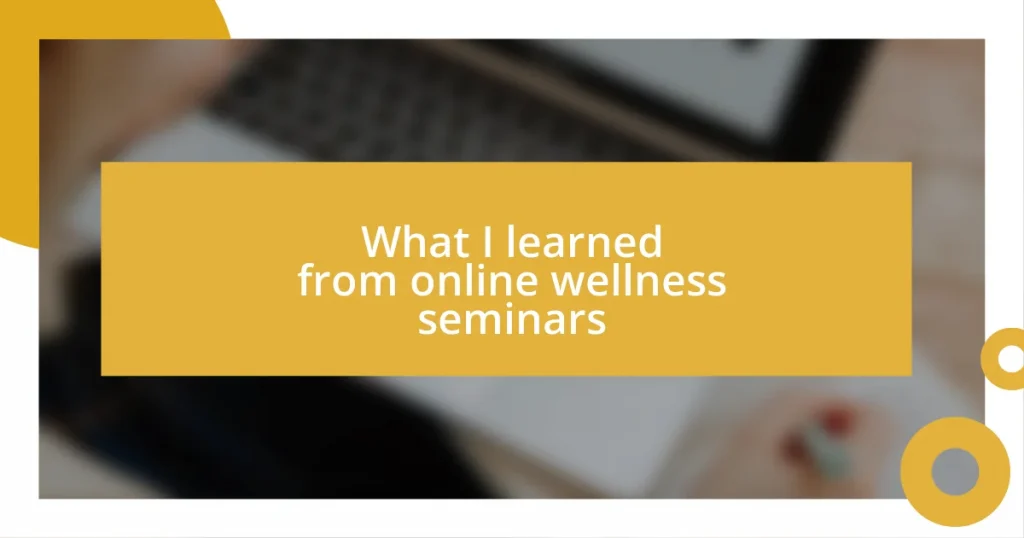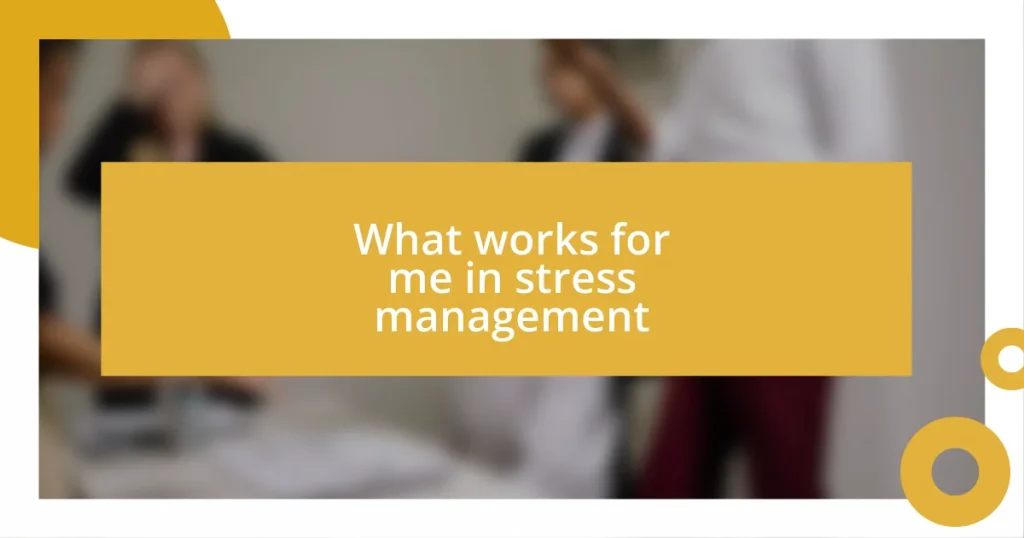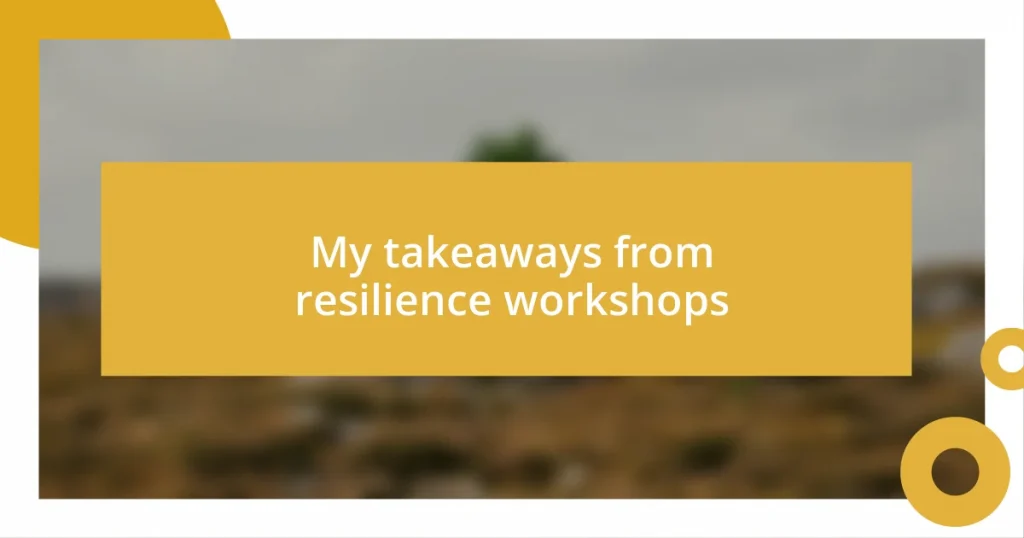Key takeaways:
- Understanding the dynamics of emergencies and recognizing personal stress triggers are essential for maintaining composure and effective decision-making.
- Utilizing breathing techniques and practicing mindfulness can help shift perspective and enhance one’s response to crises.
- Developing a crisis action plan and reflecting on past experiences fosters preparedness and confidence in handling emergencies.

Understanding emergency situations
Emergencies can strike at any moment, often turning our worlds upside down in an instant. In my experience, I’ve found that understanding the nature of these situations is crucial. They can range from minor incidents, like a small kitchen fire, to life-threatening scenarios such as car accidents, evoking a myriad of emotions—from fear to confusion. Have you ever felt your heart race at the sight of smoke, wondering what to do next?
When I faced a medical emergency with a friend once, I realized how quickly priorities can shift. Suddenly, my need for calm overtook my instinct to panic. I noticed that recognizing the situation as an emergency allowed me to focus my thoughts and actions. It’s about distinguishing between the adrenaline rush and the clarity that comes with composed decision-making.
Understanding the dynamics of an emergency—what’s happening, who might be affected, and the immediate needs of the moment—creates a framework for response. I remember breathing deeply as I assessed risks when a storm blew through while I was with my family; instead of succumbing to hysteria, I focused on keeping everyone safe. How would you react if faced with unexpected chaos? It’s this kind of self-reflection that prepares us for the unpredictable nature of emergencies.

Recognizing your stress triggers
Recognizing stress triggers plays a pivotal role when facing emergencies. For instance, I’ve noticed that loud sirens can instantly heighten my anxiety. It’s almost as if the sound transported me back to a time when I was stranded in traffic during a major accident. Understanding these personal triggers—like certain noises or even specific situations—allows me to prepare and respond more effectively when crisis strikes.
Sometimes, it’s not the obvious cues that trigger my stress; subtle signs can slip by unnoticed. I can recall a moment when I was caught off guard by my racing thoughts during an unexpected power outage at home. Initially, I felt a surge of panic, but once I recognized my tendency to worry about the worst-case scenario, I was able to ground myself. I took a moment to breathe and assess the situation rather than letting fear dictate my reaction.
Truly identifying what triggers stress can be a game changer. Reflecting on my own experiences, I’ve found that self-awareness enables me to manage my reactions more effectively during emergencies. For instance, I now keep a journal where I jot down stress triggers and how I responded to them in real-time. This practice not only clarifies my thoughts but also empowers me to face future incidents with a clearer mind.
| Trigger Type | Personal Experience |
|---|---|
| Loud Noises | Heightens anxiety, reminiscent of a past stressful event. |
| Isolation | Panic during blackout, with racing thoughts about worst-case scenarios. |
| Unpredictability | Grounding techniques developed through journaling experiences. |

Breathing techniques for calm

Breathing techniques for calm
When I feel the tension mounting in an emergency, I often turn to focused breathing techniques. It’s amazing how something as simple as my breath can be my anchor in chaos. I remember the time a sudden car breakdown left me stranded on a busy highway; I instinctively took a moment to breathe deeply, inhaling through my nose and exhaling slowly through my mouth. Each breath helped me re-center, shifting my focus away from panic to thoughtful action—like calling for assistance.
Here are a few effective breathing techniques I’ve found helpful during emergencies:
- Deep Belly Breathing: Inhale deeply through your nose, allowing your abdomen to rise, then exhale slowly. This calms the nervous system.
- 4-7-8 Breathing: Inhale for 4 seconds, hold for 7 seconds, and exhale for 8 seconds. This technique slows down your heart rate.
- Box Breathing: Inhale for 4 seconds, hold for 4 seconds, exhale for 4 seconds, and pause for 4 seconds. It’s like creating a mental box for your stress.
- Resonant Breathing: Aim for six breaths per minute, focusing on even inhalation and exhalation. It brings balance to your body’s response to stress.
Practicing these techniques often prepares me to utilize them instinctively in tense moments. The goal is to create space between the shock of an emergency and my response, allowing me to act with intention rather than impulse.

Practicing mindfulness during crises
In moments of crisis, I find that practicing mindfulness can profoundly shift my perspective. I remember a time when I was caught in a sudden thunderstorm while hiking. The abruptness of the storm sent my heart racing, but instead of succumbing to panic, I focused on the rhythmic sound of the raindrops and the cool breeze. This simple act of grounding myself in my surroundings helped me appreciate nature’s beauty amid chaos. It made me realize how often we overlook these small details when we’re overwhelmed.
Mindfulness isn’t just about noticing the environment; it’s also about tuning into my thoughts and feelings without judgment. For example, during a particularly stressful day at work, I took a few minutes to acknowledge my racing thoughts instead of pushing them aside. I thought, “Why do I feel this way?” This self-inquiry opened my eyes to the fact that acknowledging my emotions—rather than fighting them—allowed me to become more centered. I could practically feel the tension melting away as I embraced a more compassionate stance toward myself.
Embracing mindfulness during emergencies can take practice, but I’ve found it immensely rewarding. When I take those moments to breathe deeply, to observe, and to reflect, it transforms my entire experience of the crisis. Have you ever noticed how time can feel like it slows down when you’re truly present? That’s mindfulness at work. It not only enables me to act more skillfully but also fosters a sense of peace that’s invaluable during life’s unpredictable moments.

Developing a crisis action plan
Creating a crisis action plan is essential for navigating emergencies effectively. I recall when my neighbor had a sudden medical scare. We had never discussed what to do in such scenarios, and the lack of a plan made it all the more chaotic. The experience taught me how crucial it is to have a clear outline of steps to take in emergencies—like knowing whom to call, where to go, and what supplies to have ready. When you’re aware of your action plan, there’s a sense of security that can instantly calm my nerves.
One key aspect of my plan is designating roles among family members. For instance, during a yearly fire drill, I assigned my daughter the task of grabbing the emergency backpack while my son was responsible for checking on our pets. It was striking to see how they stepped into those roles, fueling their confidence in handling emergencies. Have you considered who would take the lead in your family? Making a detailed plan and involving everyone boosts our unity and preparedness when the unexpected strikes.
I’ve also learned to envision various scenarios and our responses to them. For example, if we faced a natural disaster like an earthquake, we would practice how to “drop, cover, and hold on.” Thinking through these possibilities ahead of time helps me feel more in control. It’s comforting to know that, even amidst confusion, I have a roadmap guiding my actions. How empowering it is to take charge of our own safety!

Staying focused on solutions
Staying focused on solutions is crucial during emergencies. I remember a time when I was stuck in traffic during a severe storm, struggling to find a way out. Instead of stressing over the situation, I took a moment to think about alternative routes or contacting someone to check on how bad the weather was. By redirecting my energy toward finding solutions, I felt empowered rather than helpless.
When I face a crisis, I often visualize possible solutions unfolding like scenes in a movie. I once had a close friend experience a sudden home emergency, and we quickly brainstormed ways to assess the damage while keeping it safe. Taking this proactive approach not only calmed our nerves but also fostered teamwork and creativity. I ask myself, “What can we do right now?” Engaging my mind in this way transforms panic into action, making even the most daunting challenges seem manageable.
Focusing on solutions can also mean embracing a mindset of adaptability. For instance, when my team faced sudden changes in a project deadline, we recalibrated our strategy instead of dwelling on the setback. I adjusted my priorities and encouraged my colleagues to consider new approaches. Have you noticed how a shift in perspective can unlock a path forward? This adaptability not only alleviates stress but can lead to innovative solutions that I might never have considered otherwise.

Reflecting on past experiences
Reflecting on past experiences is a powerful way to cultivate calmness during emergencies. I still vividly remember the panic I felt when our family’s car broke down in the middle of nowhere. Instead of succumbing to anxiety, I drew on my previous encounters with similar situations and reminded myself to breathe and assess what we needed to do. This reflection gave me clarity—my first step was ensuring my family was safe, just as I had practiced before.
In another instance, I had been part of a community event that suddenly spiraled into chaos when a thunderstorm hit. Reflecting on that moment, I realized how my quick thinking helped rally people together. I encouraged others to gather supplies and create a sheltered area. I can’t help but wonder: how often do we underestimate the power of collective action in tough situations? The experience taught me that recalling past events allows me to tap into my instincts and creativity, making decisions with purpose.
There’s something remarkably calming about revisiting my experiences when crises unfold. I once faced an urgent situation in a meeting when a colleague began to panic over a technical failure. I remembered a time when I had learned to stay composed amidst the chaos. By sharing that experience with her, I not only enhanced my own calm but also reassured her that we could tackle this together. Have you experienced a moment when your past shaped your response? Those reflections can be invaluable, transforming worry into confidence.
